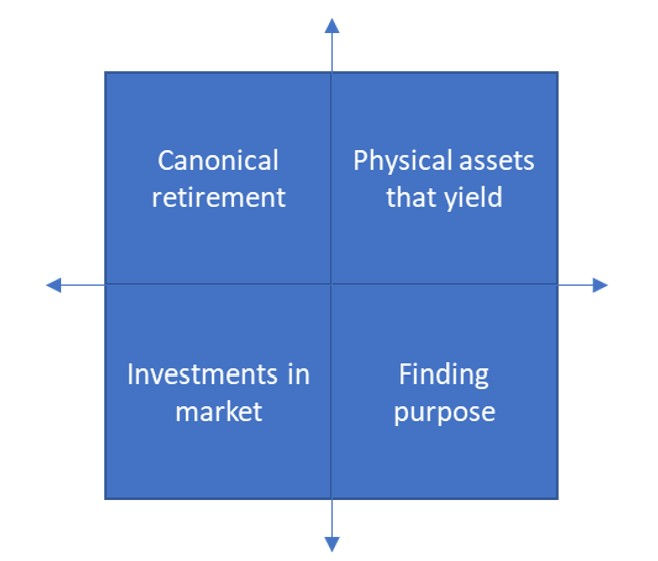What’s in your 4th Quadrant?
- Tejas Dixit
- Oct 17, 2022
- 3 min read
If we ask ten people, “What does a good retirement mean for you?”, we will get 10 different answers. Some people want to spend time relaxing on the beach or playing golf, some people aspire to follow their hobbies & passions, some want to travel the world, some want to double down on philanthropy etc … regardless of the goal, it will need money to indulge in most of the pursuits. There is no right answer to that question ……. Infact one might argue if it is the right question to ask in first place. A better question that might also encompass a reality check on feasibility could be “Do you have an investment strategy to support your indulgences if you were to retire at age 55. Quantifying the retirement at 55 is merely to provoke an urgency in the question.
The Investment quadrant allows you to think through your investment strategy, areas that need focus and more importantly keeps you honest on the feasibility of your retirement goals. People, early in their careers might wonder about the ridiculousness of thinking of retirement at the start of their careers but early contributions into the quadrant will enable you early opportunities to pursue your passions.

The INVESTMENT quadrant comprises of four areas. The main idea is sum of these areas lead to knowing accurately the answer to the above retirement question. Let’s look at the four quadrants.
Quadrant 1: This is the canonical retirement bucket. It consists of your retirement savings that kick in much later in your life, 401K, social security, ROTH IRA, fixed term life insurance, HSA medical savings etc. Ideally from the first dollar you earn, it is a great idea and more importantly a good habit to invest some part of each earned $ into the right vehicles.
Quadrant 2: This consists of your investments in the market and could be one of the key wealth force-multiplier. Stock, mutual funds, college-fund, bonds, crypto, bank savings are all part of this quadrant. Based on your investment strategy, this could serve both short term and longer-term lifestyle goals.
Quadrant 3: This is an interesting quadrant. Any physical asset that appreciates in value over time and had a potential to provide “yield” in short or long term, makes up this quadrant. Some good examples of such assets are art pieces from well-known artists, collectible automobiles, real estate, high end watches, sport memorabilia etc. Amongst these, real estate investments (residential and/or commercial) have a potential to create incremental cashflow – With the booming short term/ long term lease market, right real-estate investments could be very rewarding in the long term. Even if your primary residence is your only real estate investment, it can act as a positive hedge against market volatility and other factors, because volatility in real estate is not as severe as the market or corrections in real-estate typically lags the market and offers some runway to coarse correct.
Quadrant 4: This quadrant is about finding purpose – what has that got to do with your investments? You could have good investments in the first three quadrants but for most people, it is critical to find some purpose or passion to pursue. Without one, you will feel empty, regardless of the amount of money or investments you have. Having clarity of mind in this quadrant also helps you understand the level of investments you would need to make in these quadrants, including in the 4th. If travel or philanthropy is important for you, you will need $$ to support it, contributing to specific set of social causes will need experience and understanding for it, generating steady cashflow in retirement without having to work full-time, launching a startup to problem solve some interesting challenges would need right mentality and perseverance to deal with ambiguity and risks etc. This is the quadrant, that helps you create impact, build your legacy, generate cashflow, give-back, share wisdom and experience.
There is no better time than NOW to start thinking about these quadrants and more specifically the fourth quadrant. So …… what’s in your 4th quadrant?

Comments